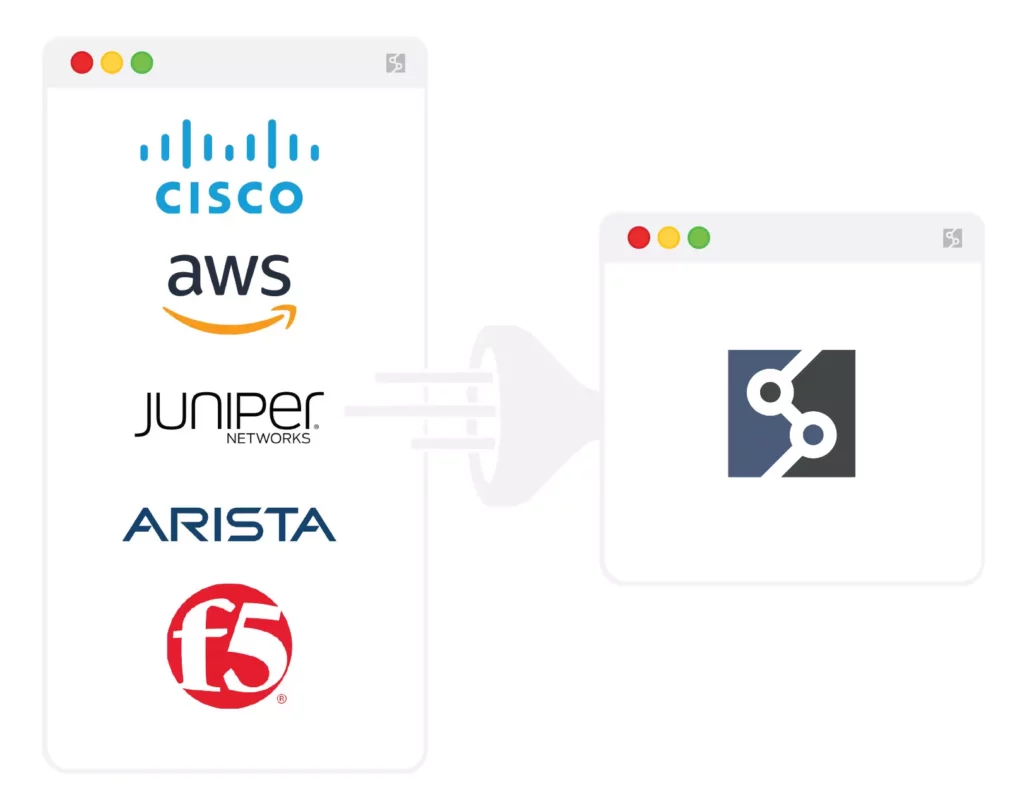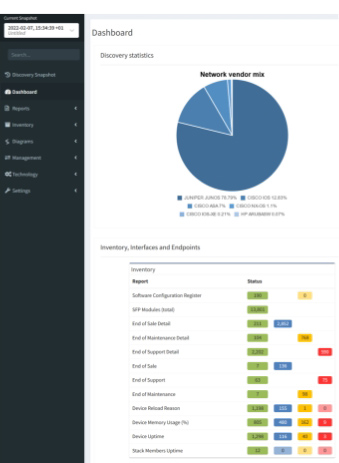

So, you may know why network observability is becoming increasingly important for enterprises, but what could it look like within a large enterprise toolscape?
Could it be one tool, or is it a strategic combination? How are these tools integrated, and what could enhance an effective network observability practice? While the exact answer will differ across organizations, what's certain is that no matter what your observability platform looks like, it will benefit from automated network assurance data.
Whether you're trying to move beyond monitoring, or you already have a more mature observability practice in place, assurance is the final puzzle piece that injects trust and validation into network operations.

What you need to know in order to have a successful observability practice may seem subjective - but there are some elements that we posit are non-negotiable, with the knowledge of how central the network is to the success of modern enterprises.
A primary cornerstone of observability should be an understanding of the actual, observed, true state of the network, at a particular point in time. This knowledge is vital for observability, as you cannot continuously observe what you don't know exists.
Proper discovery, inventory-taking, and collection of device state data, as well as mapping this out in topologies and visualizing the data, is almost impossible to achieve manually in dynamic enterprise networks, as the result would continuously be out of date.
Regular snapshots of the network give operators a means for comparison from one point in time to another, a way to answer "what's in my network" and "what's changed?"
We've mentioned before that observability is less about the network on a device level (we can leave that for monitoring) and far more about the end user. With this front of mind, easy access to how an application behaves through your network from endpoint to endpoint is invaluable.
Without end-to-end visibility, troubleshooting requires network teams to spend valuable time on repetitive tasks, while said issue could be affecting the end user.
With this in place, teams can act proactively, lowering mean time to resolution thanks to an observable network.
Read: End-to-end path simulation with API
To easily leverage network data in a useful manner for observability, it must be normalized across vendors and environments and made consumable in technology tables, or rich and flexible network models.

It's not uncommon for teams to find a way to access the network data they need but then be stuck on how to actually get value out of the data. Should they invest the time to interpret the network data they have? How can they effectively use it for reporting? Can other teams, beyond the networking team, understand it easily?
Too much undigestible data could in fact hamper your observability, muddying the view of the network with unwanted information. For this reason, any assurance solution providing network data must prioritize flexibility if it is to be useful for observability; allowing the user to choose what they see, a simple and intuitive GUI, and clear presentation of this wealth of data are all imperative.
Automated network assurance provides this network inventory, configuration, and state information, visualized and normalized across vendors and environments, via simple API integration.
Contextualized data that is normally either very difficult or impossible to gather from traditional monitoring systems, such as the end-to-end path of a packet through your network, is automatically mapped and modeled. It's ready to be used wherever you need it most (and by whichever team needs it most!).
IP Fabric's integration ecosystem has already established some pairings that elevate network observability efforts.
Use insights from IP Fabric to make monitoring more contextualized and useful for your team. Avoid alert fatigue by focusing on what's important to your teams. IP Fabric can easily provide the PRTG monitoring platform with network topology analyses for a more comprehensive view of the network.
Download: Paessler PRTG Solution Brief
Splunk is a versatile tool that helps put network data into action; IP Fabric can bolster its usefulness by providing actual network state data easily via API.
Read: How to integrate IP Fabric with Splunk
Another monitoring and assurance match made in heaven, Centreon and IP Fabric work together to take advantage of IP Fabric's advanced discovery process to ensure all the information you could possibly need is being monitored, and nothing can be overlooked.
See Documentation: IP Fabric and Centreon or Read Centreon's Blog Post: Integrating Network Assurance and IT Infrastructure Monitoring for stronger networks
It's clear that whatever your observability strategy, whether still relying on traditional monitoring or already moving toward a more mature implementation, it needs network assurance to answer to those blind spots, and give you confidence through continuous validation of your actual network state.

So, you may know why network observability is becoming increasingly important for enterprises, but what could it look like within a large enterprise toolscape?
Could it be one tool, or is it a strategic combination? How are these tools integrated, and what could enhance an effective network observability practice? While the exact answer will differ across organizations, what's certain is that no matter what your observability platform looks like, it will benefit from automated network assurance data.
Whether you're trying to move beyond monitoring, or you already have a more mature observability practice in place, assurance is the final puzzle piece that injects trust and validation into network operations.

What you need to know in order to have a successful observability practice may seem subjective - but there are some elements that we posit are non-negotiable, with the knowledge of how central the network is to the success of modern enterprises.
A primary cornerstone of observability should be an understanding of the actual, observed, true state of the network, at a particular point in time. This knowledge is vital for observability, as you cannot continuously observe what you don't know exists.
Proper discovery, inventory-taking, and collection of device state data, as well as mapping this out in topologies and visualizing the data, is almost impossible to achieve manually in dynamic enterprise networks, as the result would continuously be out of date.
Regular snapshots of the network give operators a means for comparison from one point in time to another, a way to answer "what's in my network" and "what's changed?"
We've mentioned before that observability is less about the network on a device level (we can leave that for monitoring) and far more about the end user. With this front of mind, easy access to how an application behaves through your network from endpoint to endpoint is invaluable.
Without end-to-end visibility, troubleshooting requires network teams to spend valuable time on repetitive tasks, while said issue could be affecting the end user.
With this in place, teams can act proactively, lowering mean time to resolution thanks to an observable network.
Read: End-to-end path simulation with API
To easily leverage network data in a useful manner for observability, it must be normalized across vendors and environments and made consumable in technology tables, or rich and flexible network models.

It's not uncommon for teams to find a way to access the network data they need but then be stuck on how to actually get value out of the data. Should they invest the time to interpret the network data they have? How can they effectively use it for reporting? Can other teams, beyond the networking team, understand it easily?
Too much undigestible data could in fact hamper your observability, muddying the view of the network with unwanted information. For this reason, any assurance solution providing network data must prioritize flexibility if it is to be useful for observability; allowing the user to choose what they see, a simple and intuitive GUI, and clear presentation of this wealth of data are all imperative.
Automated network assurance provides this network inventory, configuration, and state information, visualized and normalized across vendors and environments, via simple API integration.
Contextualized data that is normally either very difficult or impossible to gather from traditional monitoring systems, such as the end-to-end path of a packet through your network, is automatically mapped and modeled. It's ready to be used wherever you need it most (and by whichever team needs it most!).
IP Fabric's integration ecosystem has already established some pairings that elevate network observability efforts.
Use insights from IP Fabric to make monitoring more contextualized and useful for your team. Avoid alert fatigue by focusing on what's important to your teams. IP Fabric can easily provide the PRTG monitoring platform with network topology analyses for a more comprehensive view of the network.
Download: Paessler PRTG Solution Brief
Splunk is a versatile tool that helps put network data into action; IP Fabric can bolster its usefulness by providing actual network state data easily via API.
Read: How to integrate IP Fabric with Splunk
Another monitoring and assurance match made in heaven, Centreon and IP Fabric work together to take advantage of IP Fabric's advanced discovery process to ensure all the information you could possibly need is being monitored, and nothing can be overlooked.
See Documentation: IP Fabric and Centreon or Read Centreon's Blog Post: Integrating Network Assurance and IT Infrastructure Monitoring for stronger networks
It's clear that whatever your observability strategy, whether still relying on traditional monitoring or already moving toward a more mature implementation, it needs network assurance to answer to those blind spots, and give you confidence through continuous validation of your actual network state.





